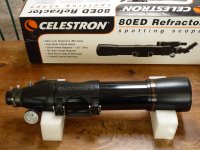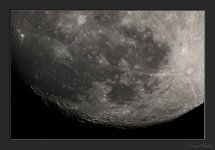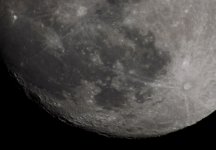doublespinss
Well-known member
Well, I'm about to join the club! Celestron 80ed will be here in 6 days  Not the skywatcher, the discontinued model shown in attachment. I'm using a cannon dslr, so what adapter should I buy? T2 or something like that? Worth mentioning that I also intend to get into cannibalizing lenses for telenegatives if that affects what extension tube/adapter I get. I am a tinkerer big time, so any thoughts on modifications greatly appreciated.
Not the skywatcher, the discontinued model shown in attachment. I'm using a cannon dslr, so what adapter should I buy? T2 or something like that? Worth mentioning that I also intend to get into cannibalizing lenses for telenegatives if that affects what extension tube/adapter I get. I am a tinkerer big time, so any thoughts on modifications greatly appreciated.
On that note, has anyone here considered using a macro bellows instead of an extension tube so that you can go from very close focus to infinity on the fly? Or maybe even to move a telenegative around for a zoom? I was thinking you might also be able to make the whole rig sturdier that way. Was halfway even toying around with removing focuser all together and replacing with a long bellows. I don't know, just brainstorming.
I also intend to build my own tripod and gimbal head if anyone has thoughts/resources related to that.
Thanks for reading and being a great community!
On that note, has anyone here considered using a macro bellows instead of an extension tube so that you can go from very close focus to infinity on the fly? Or maybe even to move a telenegative around for a zoom? I was thinking you might also be able to make the whole rig sturdier that way. Was halfway even toying around with removing focuser all together and replacing with a long bellows. I don't know, just brainstorming.
I also intend to build my own tripod and gimbal head if anyone has thoughts/resources related to that.
Thanks for reading and being a great community!






